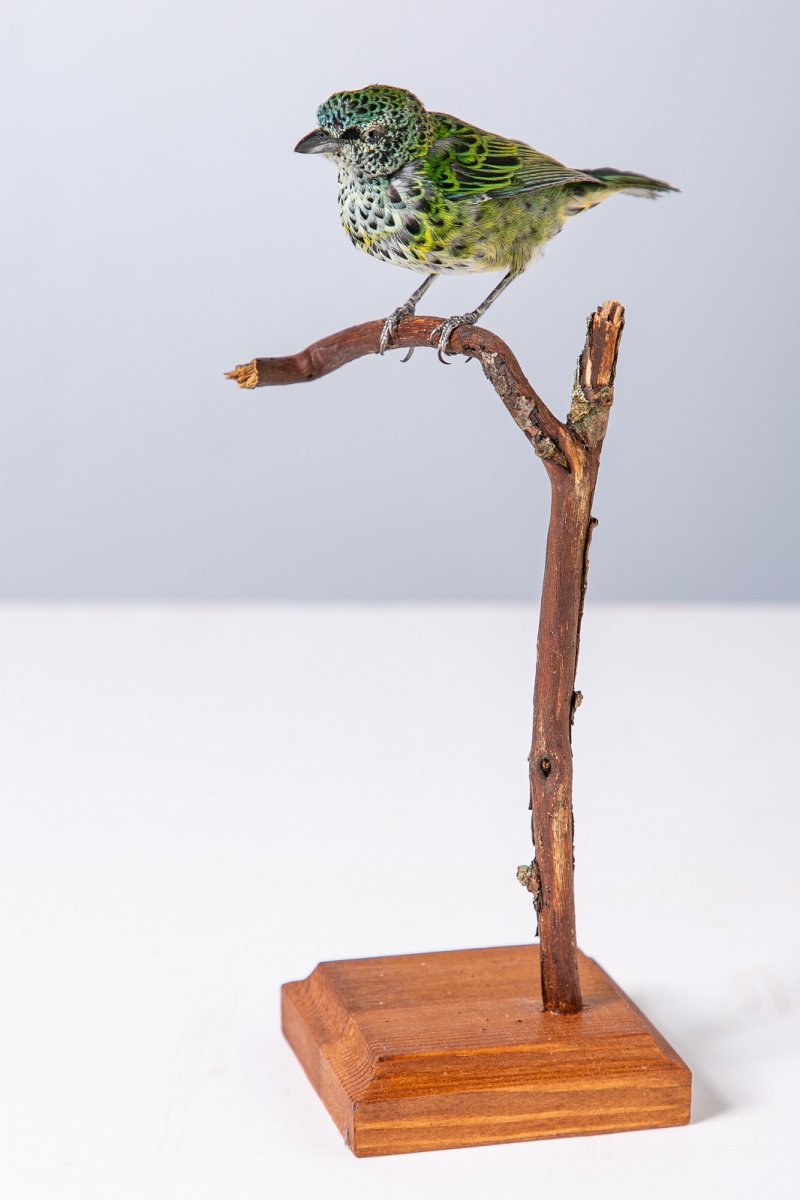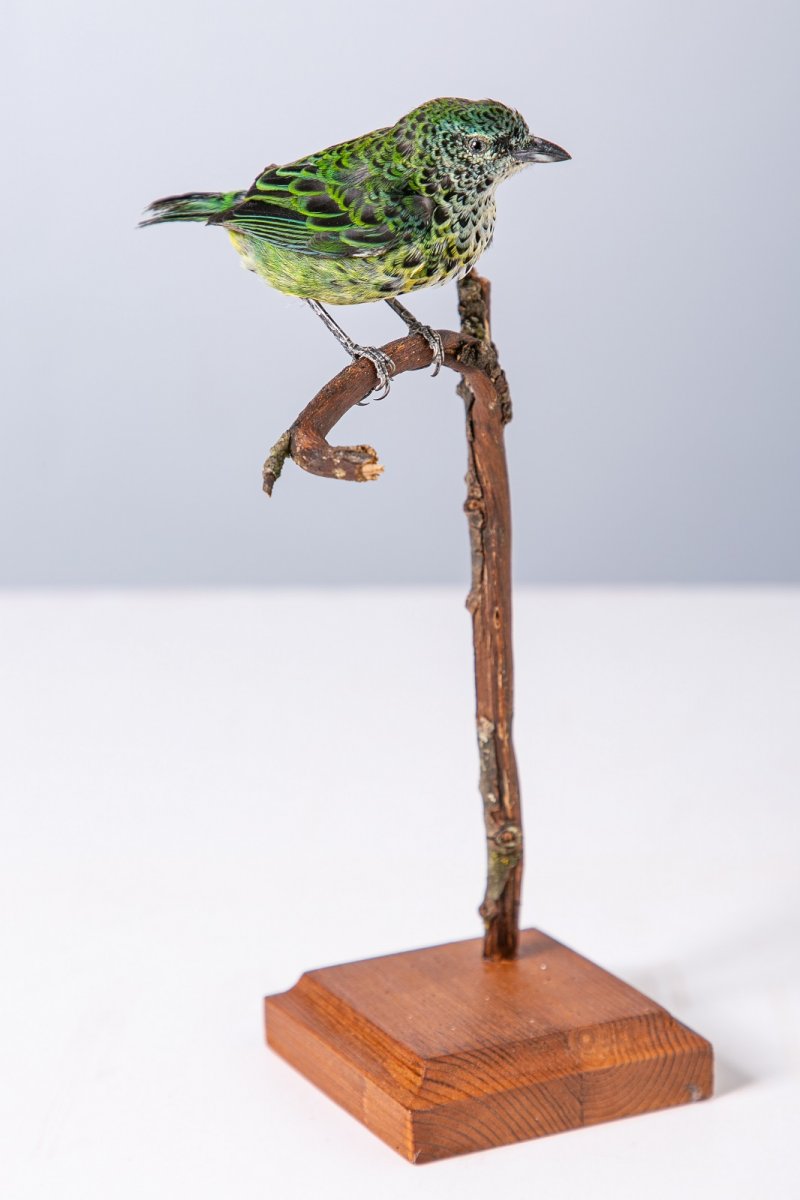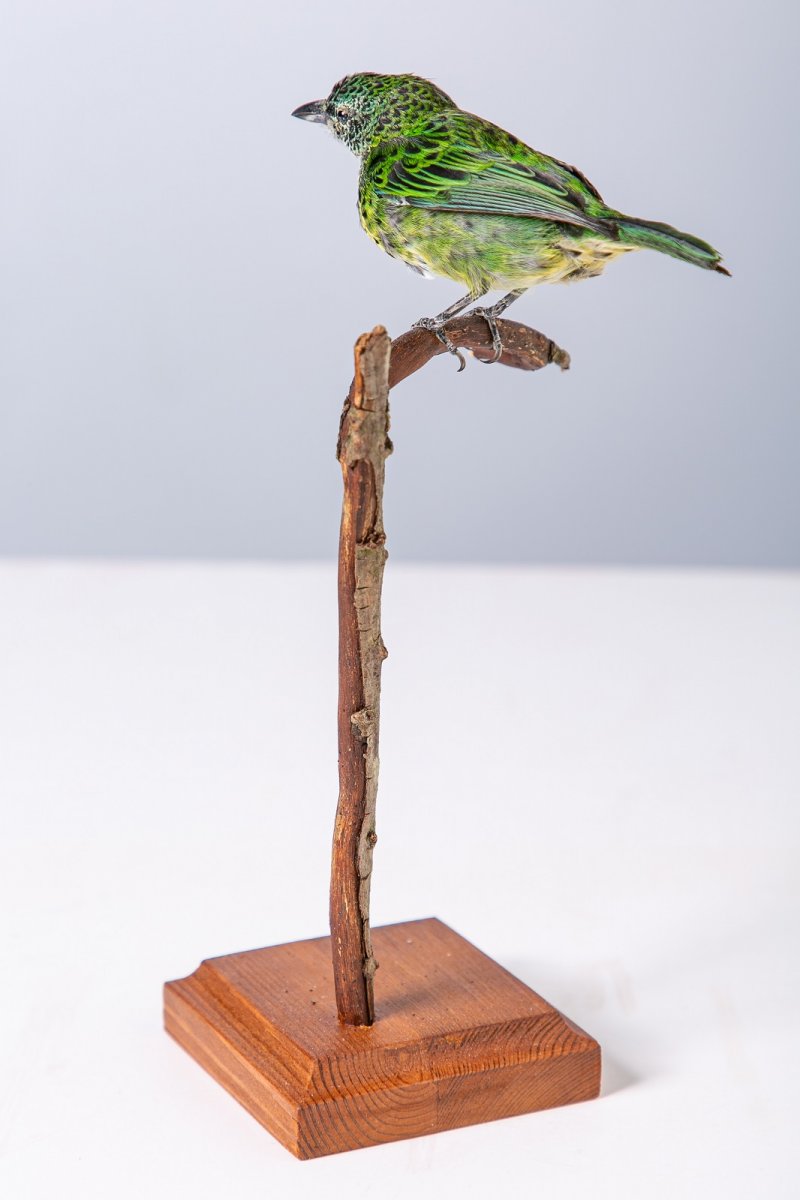16 May 2023
New in the collection – stuffed Spotted tanager
Ixothraupis punctata Linnaeus, 1766
The thrush
tanager or spotted tanager (Ixothraupis punctata Linnaeus, 1766) is a member of
the genus tanager, found exclusively in South America. Representatives of this
species are found in Bolivia, Brazil, Ecuador, French Guiana, Guyana, Peru,
Suriname and Venezuela. Their natural habitats are subtropical or tropical
moist lowland forests and subtropical or tropical moist montane forests.
In 1760,
French zoologist Mathurin Jacques Brisson included a description of this bird
in his book Ornithologie, based on a specimen collected in the West Indies. He
used the French name Le tangara verd piqueté des Indes and the Latin name
Tangara viridis indica punctulata. Although Brisson came up with the Latin
name, it does not correspond to modern nomenclature. So when Swedish naturalist
Carl Linnaeus updated his Systema Naturae for the twelfth edition in 1766, he
added the 240 species previously described by Brisson. One of them was the
spotted tanager. Linnaeus included a brief description of this bird, coined the
binary name Tanagra punctata, and cited Brisson's work. The species name
"punctata" is Latin for "spotted". Today, the spotted
tanager belongs to the genus Ixothraupis.



Комментарии могут оставлять только зарегистрированные пользователи










